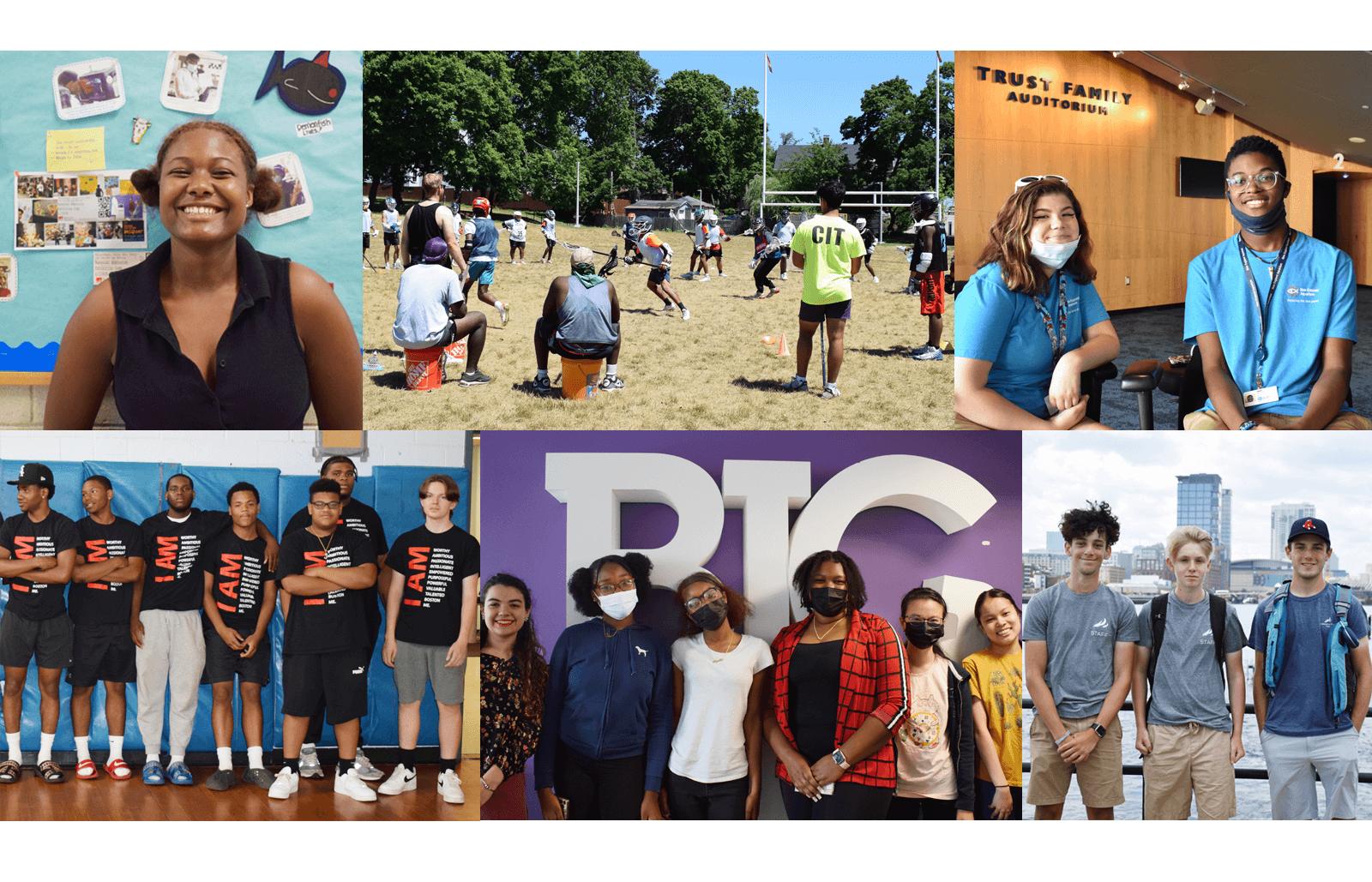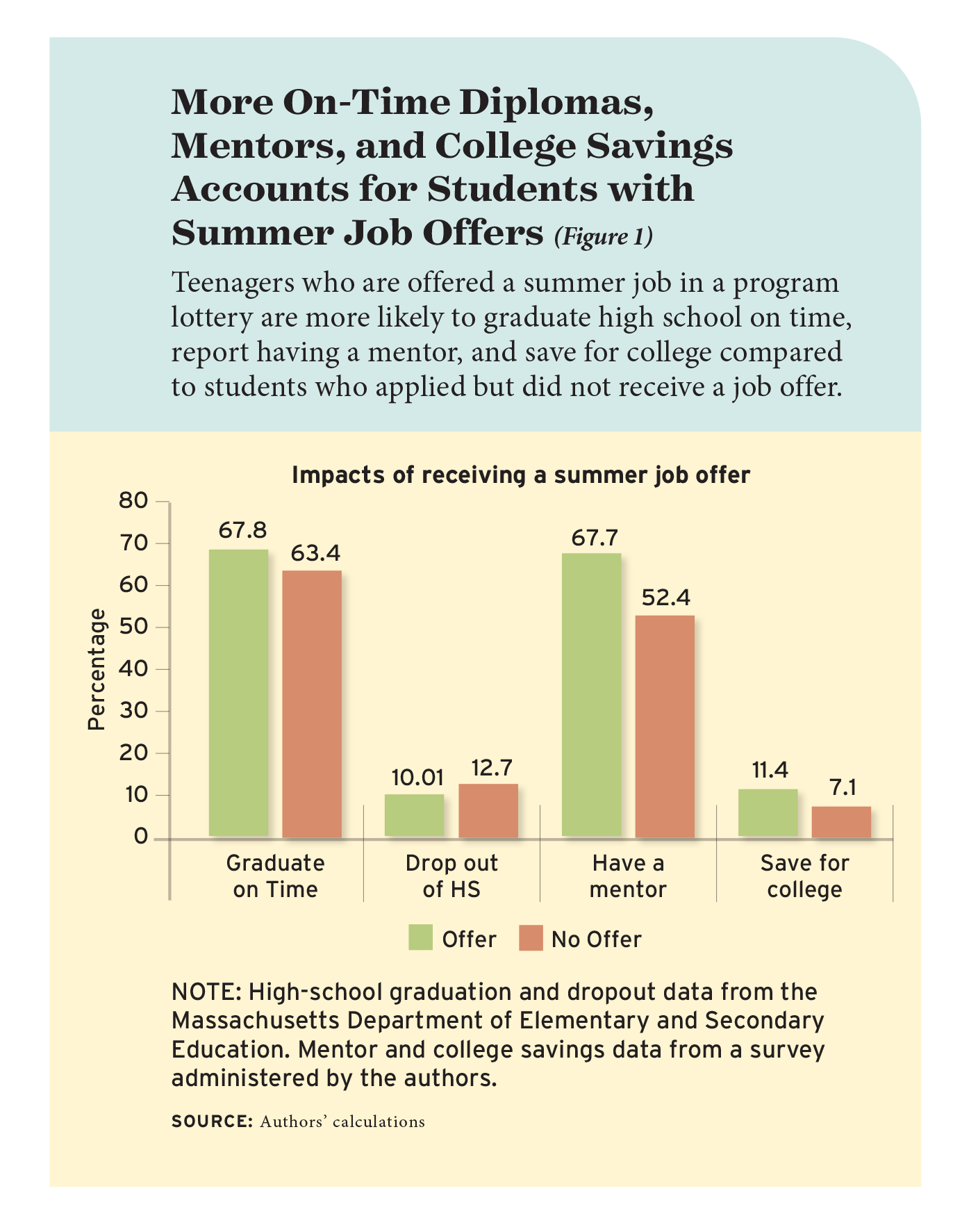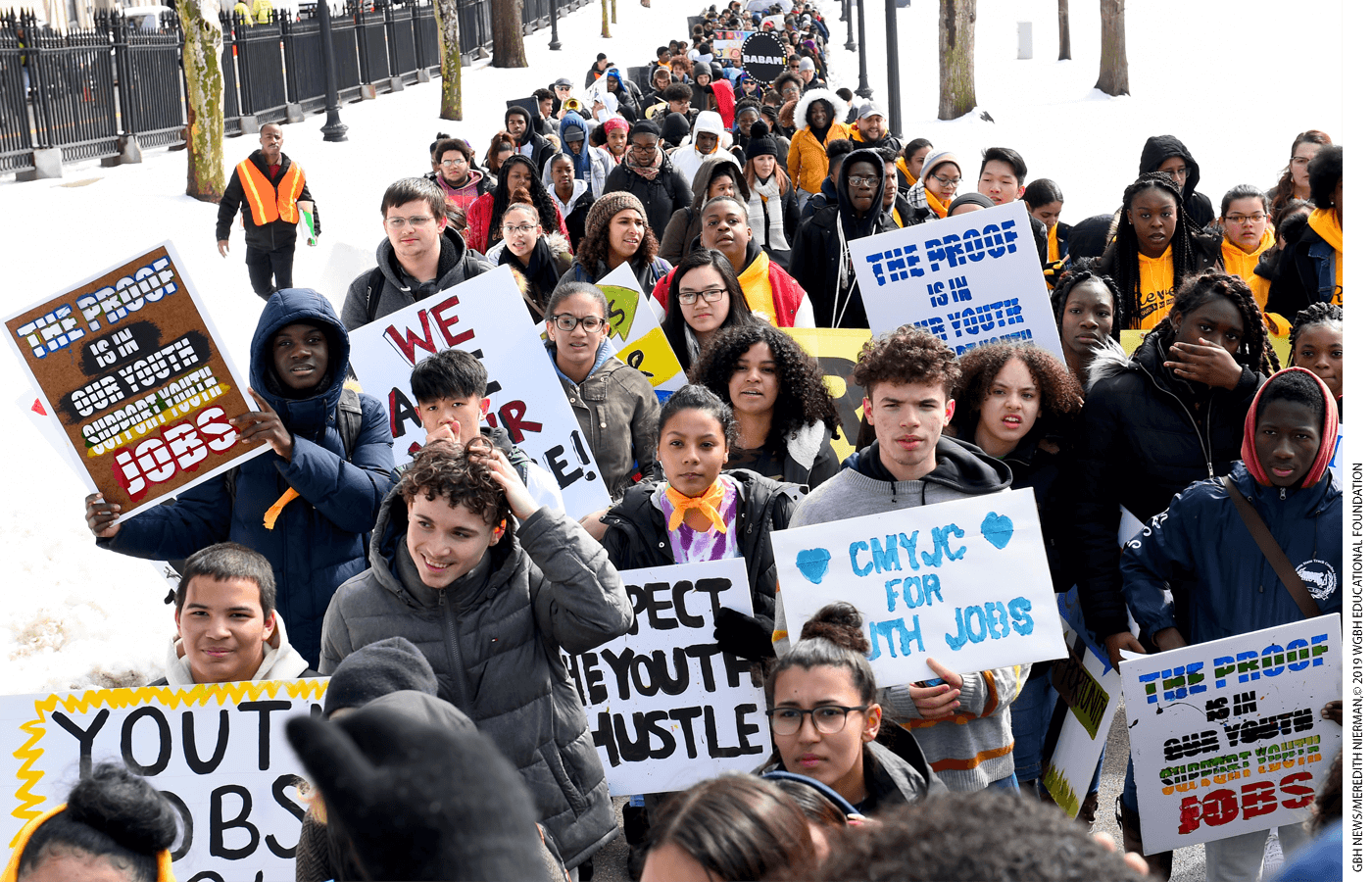
During the latter half of the 20th Century, the early blooms of spring were also a signal to the nation’s teenagers: it’s time to find a job. About half of all Americans between 16 and 19 years old spent part of their summer break bagging groceries or slinging ice cream until the early 2000s. Then, the youth employment rate fell sharply and stayed low for the next two decades and through the Covid-19 pandemic. Teenage employment has since rebounded, with about one in three young people employed in July 2023.
Black and Hispanic teens are less likely to be employed than white students, both during the summer and the school year. They also are less likely to graduate high school, enroll in college, and earn a degree. The sort of community-based learning that teenagers’ jobs can impart, such as gaining employable skills and learning to meet professional expectations for responsibility, punctuality, and collaboration, has attracted the interest of policymakers looking to improve outcomes for at-risk students.
How do early workplace experiences affect academic outcomes? We provide experimental evidence from the Boston Summer Youth Employment Program, which has matched high-school students from low-income neighborhoods with summer jobs since the early 1980s. For much of that time, students were enrolled in the program via random lottery to work in local city agencies, businesses, and nonprofits, as seasonal workers in parks, day camps, and other local organizations. By matching academic records with teenagers who are and are not offered the chance to take part, we estimate the program’s causal impact on high school graduation rates, grades, and attendance.
We find broad benefits for students selected by the program lottery. Students who receive job offers are 7 percent more likely to graduate high school on time and 22 percent less likely to drop out within a year of the program. We also find that students’ school attendance and grade-point averages improve, as do their work habits, soft skills, and aspirations to attend college. In looking at the program’s costs, the evidence suggests that its long-term benefits outweigh its costs by more than 2 to 1.
A Summer Jobs Lottery in Boston
The Boston Summer Youth Employment Program began in the 1980s and now connects about 10,000 young people with jobs at roughly 900 local employers each summer. It is part of the city’s workforce development efforts and is intended to connect young people with meaningful job opportunities that offer professional experience, resume fodder, and a paycheck.
The six-week program is available to all Boston city residents aged 14 to 24 who apply through local nonprofits or other intermediaries. Participants are paid the Massachusetts minimum wage (currently $15 per hour) and work up to 25 hours per week in either a subsidized position (e.g., with a local community-based organization or city agency) or a job with a private-sector employer. The program also offers 20 hours of job-readiness training, which includes an evaluation of learning strengths and interests; practical instruction in resume preparation, job-searching, and interviewing; and opportunities to develop soft skills like time management, effective communication, persistence, and conflict resolution. In 2015, the program cost about $2,000 per participant—including $600 in administrative expenses and $1,400 in wages earned—or approximately $10 million total from municipal, state, and private funding.
Our study focuses on Action for Boston Community Development, a large and established nonprofit that works in all of Boston’s 18 neighborhoods and serves a predominately young, school-aged, and low-income population. Prior to the pandemic, the organization used a computerized lottery system to select applicants to participate in the summer jobs program based on ID numbers and the number of available slots, which is determined by the amount of funding each year. This system effectively assigned the offer to participate at random.
We focus on the summer of 2015, when 4,235 young people applied. We match applicant names with data from the Massachusetts Department of Elementary and Secondary Education to review the demographic and academic characteristics of youth who were and were not offered a program spot and to track and compare their outcomes over time. About 80 percent of applicants, or 3,372, were in grades 8–11 when they applied.
The average applicant was between 15 and 16 years old. About 53 percent were Black, 32 percent were identified as mixed race or “other,” 9 percent were white, and 6 percent were Asian. About 54 percent were female. Seven percent identified as having limited English ability, 7 percent reported being homeless, and upwards of 18 percent reported receiving cash public assistance in some form. Nearly 10 percent had switched schools during the academic year, and 15 percent attended a charter school. Applicants’ mean grade-point averages were 1.9, and nearly 30 percent were chronically absent from school. More than a quarter of applicants had failed a class.
Job offers were randomly granted to 28 percent of applicants, or 1,186 young people. The other 3,049 applicants did not receive an offer. We look at the demographics and academic performance of youth in these two groups and find no substantial differences—not surprising given that offers were awarded by a lottery. However, workforce participation rates were starkly different in the months that followed: 83.6 percent of lottery winners accepted the summer job offer, while just 28.2 percent of applicants who were not offered a job through the lottery worked between July and September, data from the Massachusetts Division of Unemployment Assistance shows.
We compare school outcomes for students who were and were not offered a summer job during the four-year period after the summer of 2015. We focus on the full group of 1,186 students who were offered a job rather than the 990 teenagers who accepted the placement and participated to measure the impact of receiving an offer. In many cases, that is the policy-relevant estimate, because while program administrators can offer an intervention, they cannot control who agrees to take part.
We theorize that the Boston summer-jobs program could have both direct and indirect effects on graduation. The program could directly increase career and academic aspirations that motivate students to graduate on time. It also could have two potential indirect effects that positively influence graduation. First, it is designed to develop good work habits like showing up on time, which could help students improve their school attendance and the likelihood of high-school graduation. Second, it provides youth with an opportunity to practice existing skills on the job and develop new ones, which may lead to better course performance and, ultimately, increase the probability of graduating.
Therefore, our primary outcomes of interest during the four-year post-intervention period are high-school graduation and dropout rates. We also examine more proximate outcomes that serve as potential mediators for longer-term effects: school attendance, course performance, and standardized test scores. Because offers are distributed by a random lottery, we obtain causal estimates simply by comparing the average outcomes of lottery winners and losers. Finally, we look at exploratory mechanisms from our survey data, which describes changes in students’ aspirations, work habits, and soft skills. We also look at effects by subgroups of students.

Impacts on Graduation, Attendance, and Academic Performance
Students who win the lottery and are offered a summer job are more likely to graduate high school on time and less likely to drop out compared to students who are not offered a job. Some 67.8 percent of students offered a summer job graduate high school on time compared to 63.4 percent of students who don’t receive an offer, a difference of 4.4 percentage points, or 7 percent (see Figure 1). In addition, dropout rates are higher among students who are not offered a summer job compared to those who are: 12.7 percent drop out within four years compared to 10.1 percent of lottery winners. Most of that difference occurs within the first year of participating in the program, when the dropout rate is 10.7 percent for students without job offers compared to 8.8 percent for students offered a summer job—a difference of 1.9 percentage points, or 22 percent.
We next examine outcomes that could help to explain the program’s impact on high-school graduation. In looking at attendance in the year after the program lottery, we see that students with job offers attended 3.4 additional school days compared to students who were not offered a summer job. This difference is due mainly to their having fewer unexcused absences during the next school year. Students offered a summer job are truant 2.1 fewer days compared to students not offered a summer job, suggesting a behavioral shift.
In fact, the overall difference in absenteeism is driven largely by lottery winners maintaining their attendance rates from the previous school year while attendance for non-winners falls. Since school attendance rates typically decline as youth age, this suggests that the summer jobs program could contribute to higher graduation rates by preventing chronic absenteeism. Indeed, we look at the relationship between these outcomes and find better attendance is positively correlated with a greater likelihood of graduating from high school.
In terms of academic achievement, we find a small positive impact on overall grade-point averages for lottery winners in the first year but no impact on course failures. Grade-point averages are 6.8 percent higher for students offered jobs than for students not offered jobs in the first year after the program. While the difference is relatively modest, with a grade-point average of 1.94 for lottery winners compared to 1.75 for non-winners, further analysis indicates that this small increase in course performance contributes significantly to boosting on-time high-school graduation. However, we find that the program’s effect on grade-point average disappears by the second year.
We also look at impacts across different groups of students and find outsized impacts on school attendance and academic performance. The positive impact from a job offer on school attendance is three times as great for males, applicants of legal dropout age, and students who were chronically absent before applying to the lottery. For students of legal dropout age, the program’s boost in grade-point average is also three times as large as that for younger youth. The program also appears to increase the likelihood of high-school graduation more for students with limited English proficiency and low socioeconomic status. However, the results for those students are less precise as the subgroups are relatively small.

Shifts in Attitudes and Aspirations
What might be driving the reduction in chronic absenteeism and subsequent increase in on-time high-school graduation rates? To learn more about students’ experiences and behaviors, we worked with Boston city officials and the Action for Boston Community Development to administer a survey that included questions related to job readiness, post-secondary aspirations, work habits, and socio-emotional learning. This survey was completed by 1,327 participants, split equally between students who participated in the program and students who were not offered a summer job. While response rates differed between these groups, given a lack of data and evidence on potential reasons why a summer jobs program boosts important school-based outcomes months and years later, we feel that there are still some key insights to be gained. While the first part of our analysis establishes causal impacts, the goal here is to provide a glimpse into how the program achieves those outcomes.
After working a summer job, students experience significant improvements across a variety of short-term behaviors and skills that could plausibly contribute to the improvements in school outcomes our causal estimates show. For example, 67.7 percent of students who participated in the jobs program report having gained a mentor over the summer compared to 52.4 percent of students who were not offered a spot. They also are significantly more likely to report having developed good work habits, such as being on time and keeping a schedule, as well as essential soft skills, such as managing emotions and asking for help. Notably, 11.4 percent of program participants report that they are saving for college tuition compared to 7.1 percent of applicants who were not offered a spot—an indication that the participants are not only exposed to experiences that might boost academic aspirations but are also motivated to act on those ambitions.
An Annual Opportunity
To our knowledge, this is the first study to document an improvement in high-school dropout and graduation rates associated with a summer jobs program. Young people who were randomly selected to receive a job offer are 7 percent more likely to graduate high school on time compared to students who do not receive an offer—an impact that is similar in size to the gap in on-time graduation rates between economically disadvantaged students and their wealthier peers in the Boston Public Schools. Within the first year of the program, students with job offers are 22 percent less likely to drop out of school than students who were not offered a job. These effect sizes are meaningful in terms of closing achievement and attainment gaps. They also are on par with low-cost educational interventions, such as reminding parents about the importance of attending school.
When assessing the value of any program, benefits should be considered relative to their costs. By some estimates, each new high-school graduate confers a net benefit to taxpayers of roughly $127,000 over the graduate’s lifetime. In 2015, the Boston Summer Youth Employment Program cost roughly $2,000 per participant, resulting in a total cost of about $2.4 million for the 1,200 youth who were offered jobs that summer through the nonprofit we study. We find that the program increases the likelihood of high-school graduation by 4 percentage points, which would yield an additional 48 graduates. Over their lifetimes, these graduates would collectively confer a benefit of $6 million—for a benefit-to-cost ratio of more than 2 to 1.
While these positive impacts are notable, they are likely not the only benefits. Students who participate in a supervised and development-oriented summer jobs program gain new experiences and professional connections that may yield additional advantages in terms of future employment, career pathways, or postsecondary education. Insights from survey data show students seem to benefit from mentorship and developing work habits and soft skills that promote success in a variety of settings, including high school. Finally, summer jobs programs also can help families at or near the poverty line by providing income to young people. Our survey found that half of participants use their earnings to help pay one or more household bills, and one in five report saving for college tuition.
While most students and families often look forward to summer vacations, seasonal jobs programs present a clear opportunity to benefit young people and their families, particularly those from low-income neighborhoods with few job opportunities nearby. Supervised work experiences improve high-school graduation rates and boost students’ employability, work habits, and family finances. With clear and positive benefits that last beyond the summer, seasonal youth jobs programs have an important role to play in the landscape of extracurricular activities.
Alicia Sasser Modestino is associate professor of economics and the research director for the Dukakis Center for Urban and Regional Policy at Northeastern University. Richard Paulsen is assistant professor of economics at Bloomsburg University.
This article appeared in the Fall 2023 issue of Education Next. Suggested citation format:
Modestino, A.S., and Paulsen, R. (2023). Year-Round Benefits from Summer Jobs: How work programs impact student outcomes. Education Next, 23(4), 60-65.


